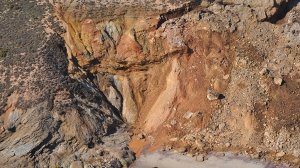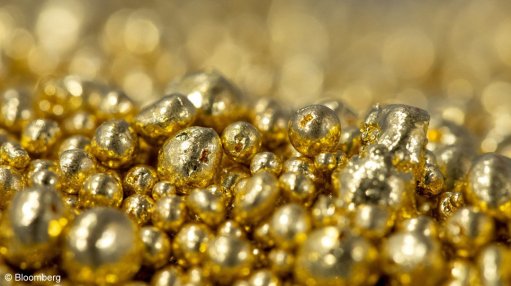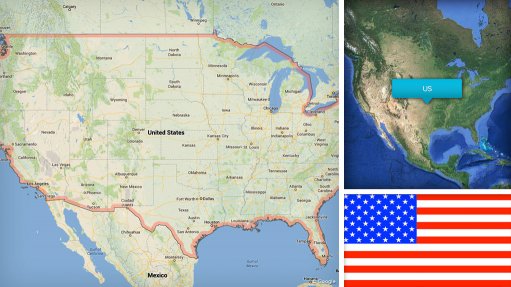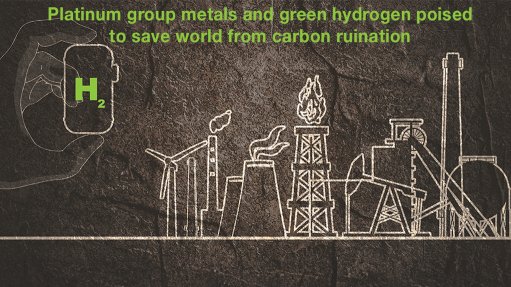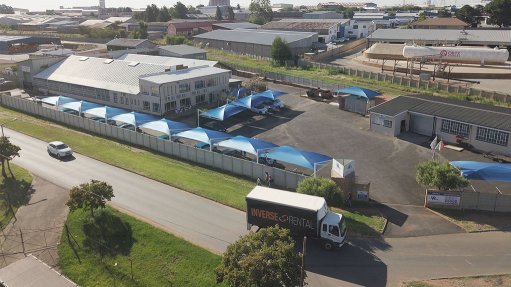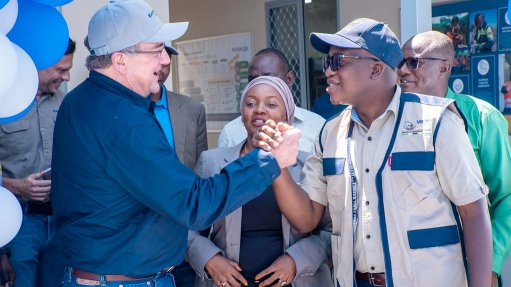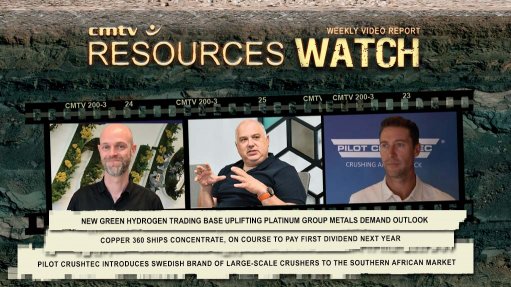Mineral sands miner, enviro activists in standoff over West Coast mine
JOHANNESBURG (miningweekly.com) – ASX-listed mineral sands miner Mineral Commodities (MRC) has defended itself against allegations that its West Coast-based Tormin mine is negatively impacting the environment and community surrounding the operation.
In a statement to the media, opponents of the mine said Vredendal locals, who were not against mining taking place in the region per se, were worried about the impact of the mine, as they believe local roads were being damaged by the trucks that transport zircon from Tormin’s plant to Cape Town and garnet to Saldanha Bay.
The opponents noted that the roads in the region were not designed to carry the number of heavy-duty vehicles using it and felt that the mine should instead use the rail network to transport its products to market.
The opponents believe that this is being exacerbated because MRC is allegedly removing more unprocessed heavy mineral sands than permitted. They also noted that this had led to a 300% increase in truck movement in the area over the past year.
Further, the opponents said locals had also noted that MRC recently informed its shareholders that it had entered into a three-year garnet offtake agreement with Garnet Group of Australia (GMA).
The opponents alleged that people with knowledge of Tormin say GMA is being sold the garnet without approval from authorities or the legally required licence.
The opponents further claimed that GMA did not have sufficient capacity to take up all the garnet being produced by Tormin.
They said this has resulted in stockpiling of the mineral, which is a low-grade radioactive material and, in some instances, it is being dumped back into the sea.
The opponents averred that this had affected the water processing systems at the mine.
They claimed these are now operating in a manner that they were not designed for. This the opponents claimed results in uncontrolled run-off contaminating groundwater in the surrounding conservation areas, and the beach and is destabilising the land on which the mine’s processing facility is built.
The opponents said there was “very little” indication that authorities were monitoring or even aware of what was taking place at the mine.
They stated that in the absence of this, the economic benefits will be overshadowed by damage to the environment and the potential health and safety risks that the workers on site and the surrounding community are exposed to.
Further, the opponents alleged that Tormin’s operations had spread, with mining taking place in the 10 m buffer zone, which had “destabilised” the cliff face and dune vegetation.
They stated that the worst possible impact of the above-mentioned transgressions was cliff failure. The opponents stressed that this failure is permanent and cannot be mitigated.
They added that this also posed a health and safety risk to the employees on site, employees from other nearby mining operations and local farmers who all use the area.
The opponents claim that in the past year, the mine has shown a total disregard for environmental legislation governing these types of operations in South Africa, as well as the commitments it made to the community.
They said that if immediate action is not taken by authorities, locals fear that it is only a matter of time before a disaster occurs, resulting in irreparable damage to the environment, and potentially in the loss of life.
The opponents also believed that the mine was not delivering the economic benefits that had been promised at the outset.
MRC RESPONDS
In response to the allegations levelled by the mine’s opponents, MRC CEO and executive chairperson Mark Caruso told Mining Weekly Online that the company was bound by the operating conditions and obligations of its mining right to optimise and extract all economic heavy valuable minerals.
“We, therefore, operate with the full consent and knowledge of all relevant authorities,” he stated.
Caruso explained that the company had initially used the rail facility at Klawer to transport its nonmagnetic zircon concentrate to the Cape Town port for export.
“This required triple handling of the 2 t bulker bags and was costing us double the freight rate that would otherwise have applied using direct road transport from the mine site to the port. The bulk heavy mineral concentrate, which contains garnet, is shipped out of Saldanha Bay, as there is no available storage or viable rail alternative for the transport of this product,” he stated.
However, he said MRC “continues to explore all opportunities with Transnet to [make] use [of its] rail services”.
Additionally, he pointed out that MRC’s mining right, which was granted in August 2008, allowed it to extract garnet and all heavy minerals.
“We investigated all avenues to value add by processing concentrates within South Africa including the heavy mineral concentrate product stream containing garnet,” highlighted Caruso.
He also pointed out that despite “exhaustive negotiations” with local downstream processors it was found that there was no capability in terms of processing infrastructure and capacity to handle the entire quantity of heavy mineral concentrate containing garnet.
The company has also commissioned various studies to actively pursue vertically integrated downstream processing to produce finished product from all concentrates produced from the Tormin mine site.
“Tormin has been operating since October 2013 and has had numerous regulatory inspections from various departments in that time, including the Department of Mineral Resources (DMR), the Department of Environmental Affairs, the Department of Water and Sanitation and the DMR’s Safety division,” Caruso pointed out.
He added that the mine had also conducted an independent audit of its compliance, with no transgressions reported, adding that there had, in fact, been an endorsement of its operations as environmentally compliant.
Further, Caruso stressed that the allegations regarding radioactive material being placed back on the beach or stockpiled are “simply baseless” and without any technical validity.
“The company has operated since construction with an impeccable safety record with no lost time injuries being recorded after nearly 800 000 active work hours.”
Moreover, he stated that MRC has a full time radiation officer to ensure compliance with the National Nuclear Regulator’s legislation.
“Statements concerning garnet being placed back on the beach implying some form of risk seem to be somewhat at odds with the fact that the garnet comes from the beach in the first place as do all other products produced on the mine site.
“Tormin also does not mine the zone between the cliff and the 10 m demarcation. We mine from the 10 m demarcated zone seawards, to the low tide watermark. The mine shares the mining lease with a diamond mining company, which has the rights to mine the 10 m buffer zone,” Caruso pointed out.
He also said that the allegations of cliff degradation as a result of Tormin’s operations was “simply unfounded” in fact.
“The mine has had a number of independent studies undertaken to support this including photographic monitoring of the cliff areas since operation started.
“There is a natural degradation of the cliff area by climatic erosion, which is unassociated with the mining operation.”
Caruso added that, in relation to the claims of groundwater contamination, the plant site and associated infrastructure of the mine were situated on a geological schist structure, which was effectively an impermeable formation that did not allow any ingress of water.
Moreover, he noted that there was no natural groundwater aquifer below the plant site and, therefore, there could be no contamination.
Caruso also pointed out that the company had groundwater monitoring bores that have found no signs of any groundwater contamination.
Additionally, he highlighted that MRC had, to date, invested R250-million in developing Tormin, 90% of which was spent in South Africa, on fabrication and construction.
“Tormin employs 236 direct full-time employees. The mine’s yearly operating budget is about R300-million to R350-million a year. There are also numerous subcontractors involved in various aspects of the mine’s operation, including the transport of workers and the transport of materials to the ports of Cape Town and Saldanha Bay,” Caruso emphasised.
“Tormin also generates significant royalties which are being paid to the State,” he noted.
Caruso further pointed out that MRC also had commitments in terms of its social labour plan, which dealt with, besides other aspects, infrastructure projects within the community, education bursaries, traineeships and educational learnership programmes.
“All this economic and social upliftment did not exist until the mine became operational,” he concluded.
Comments
Press Office
Announcements
What's On
Subscribe to improve your user experience...
Option 1 (equivalent of R125 a month):
Receive a weekly copy of Creamer Media's Engineering News & Mining Weekly magazine
(print copy for those in South Africa and e-magazine for those outside of South Africa)
Receive daily email newsletters
Access to full search results
Access archive of magazine back copies
Access to Projects in Progress
Access to ONE Research Report of your choice in PDF format
Option 2 (equivalent of R375 a month):
All benefits from Option 1
PLUS
Access to Creamer Media's Research Channel Africa for ALL Research Reports, in PDF format, on various industrial and mining sectors
including Electricity; Water; Energy Transition; Hydrogen; Roads, Rail and Ports; Coal; Gold; Platinum; Battery Metals; etc.
Already a subscriber?
Forgotten your password?
Receive weekly copy of Creamer Media's Engineering News & Mining Weekly magazine (print copy for those in South Africa and e-magazine for those outside of South Africa)
➕
Recieve daily email newsletters
➕
Access to full search results
➕
Access archive of magazine back copies
➕
Access to Projects in Progress
➕
Access to ONE Research Report of your choice in PDF format
RESEARCH CHANNEL AFRICA
R4500 (equivalent of R375 a month)
SUBSCRIBEAll benefits from Option 1
➕
Access to Creamer Media's Research Channel Africa for ALL Research Reports on various industrial and mining sectors, in PDF format, including on:
Electricity
➕
Water
➕
Energy Transition
➕
Hydrogen
➕
Roads, Rail and Ports
➕
Coal
➕
Gold
➕
Platinum
➕
Battery Metals
➕
etc.
Receive all benefits from Option 1 or Option 2 delivered to numerous people at your company
➕
Multiple User names and Passwords for simultaneous log-ins
➕
Intranet integration access to all in your organisation




